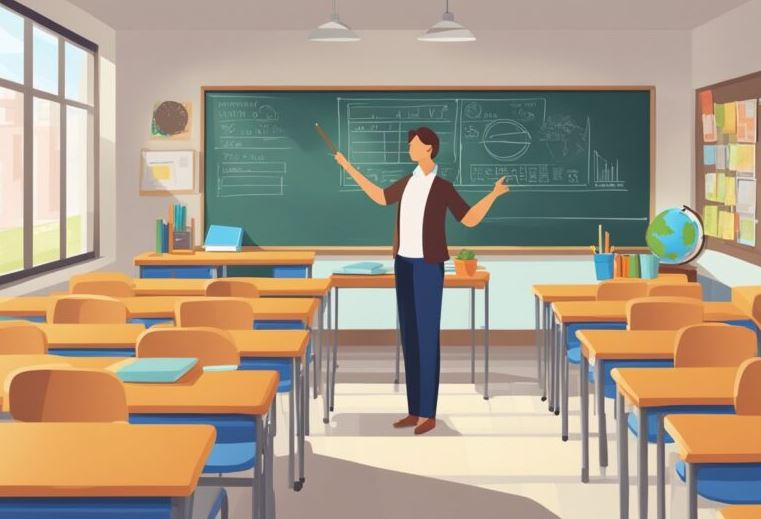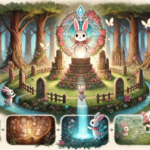You don’t have to spend thousands on marketing or explainer videos. With the right animation maker, you can produce high-quality content that speaks directly to your audience – whether you’re teaching algebra or promoting a reading program. Combine that with smart tech investments like a decent microphone, screen capture software, and a mid-range tablet, and you’ve got a simple setup that can produce real value.
It’s the same principle as classroom engagement – if your content is animated, story-driven, and visually appealing, people will pay attention. Whether they’re students or potential customers.
Using animation in education isn’t about being flashy or trying to entertaiLet’s face it: keeping students focused is a tall order these days. Between smartphones, short attention spans, and endless online distractions, grabbing and holding your students’ attention can feel like running a marathon in flip-flops. But here’s the good news – visual storytelling, especially through animation, can flip that narrative.
You don’t have to be a professional animator or tech wizard to bring creative visuals into your lessons. With the right tools and a little curiosity, you can start using animation to not only make your classes more dynamic but also help students absorb concepts faster and retain them longer. So let’s dive into how educators can use simple tools to create engaging animations and why this approach works so well in the classroom.
Why Animation Works So Well in Education
Animations combine two powerful learning elements: visuals and motion. Visuals help clarify abstract ideas, and motion makes them more memorable. When students see how a volcano erupts or how the water cycle works, they’re more likely to understand and remember it.
Think back to your own school days. Which do you remember better – reading about photosynthesis in a textbook or watching it play out in an animated video? That’s the magic. And it’s not just for science; animation can enhance storytelling in literature, explain complex math problems, or even walk students through historical events.
Animations also help with diverse learning styles. Visual learners, auditory learners, and even kinesthetic learners benefit from multi-sensory content. When paired with narration or sound effects, animated videos can bridge learning gaps that traditional methods sometimes miss.
Starting Small: Tools That Make Animation Easy
One of the biggest misconceptions is that you need fancy equipment or software to make animations. Not true. Today’s tools are incredibly user-friendly – even for complete beginners. If you’re a teacher looking to animation video maker, you can start with platforms like:
- Powtoon – Great for quick explainer videos.
- Animaker – Offers drag-and-drop features with educational templates.
- Toonly – Focused on cartoon-style animations, perfect for younger audiences.
- FlipaClip – Ideal for those who want a more hand-drawn, creative approach.
Most of these tools are web-based, which means no complicated installations or bulky software. You can create short, punchy animations using built-in templates, characters, and voiceovers – even if all you have is a Chromebook and 30 minutes.
Bringing It Into the Classroom
Now that you’ve got your animation, the question is – how do you use it in class? Let’s break it down:
- Introduce New Topics: Kick off a lesson with an animated explainer. It sets the tone and gets students curious.
- Review Key Concepts: Recap what you’ve covered in a week with a fun animation. Students might even ask to rewatch it before a quiz.
- Student Projects: Turn the tables and let students be the creators. Assign them to use a tool like an animation maker to explain a concept themselves. It’s collaborative, creative, and lets them show what they know in a new way.
Animations also make remote learning more engaging. If you’re running a virtual classroom or hybrid setup, sending an animated summary video can keep students on track even when they’re not physically present.
Storytelling: The Secret Ingredient
Even the best tools won’t save you if the story is dull. So think like a storyteller. Whether you’re explaining the rock cycle or the American Revolution, try to structure your animation with a beginning, middle, and end. Introduce a challenge, show a struggle, and then reveal a resolution. It doesn’t have to be dramatic – just engaging.
For example, instead of “The water evaporates, condenses, and rains,” you could create a short story where a curious droplet named Dewey goes on a journey from a lake to a cloud and back again. It’s simple, fun, and suddenly your students are rooting for a water droplet.
Don’t be afraid to inject humor or personality. A little bit of levity can make even the driest topics feel more accessible. You’d be surprised how far a talking molecule or a sassy cartoon character can go in capturing attention.
A Bonus for Small Businesses and Tech-Savvy Educators
Interestingly, these tools aren’t just for classroom teaching – they’re also gold for small businesses. If you’re an educator running a tutoring center or a small learning-focused business, learning to crn – it’s about making content more relatable, more digestible, and frankly, more fun. And with the tools available today, it’s easier than ever to start.
So whether you’re a 3rd-grade teacher, a high school science instructor, or someone running your own tutoring gig, giving animation a try might just be the upgrade your lessons need. It brings learning to life – and that’s something every student can get behind.





